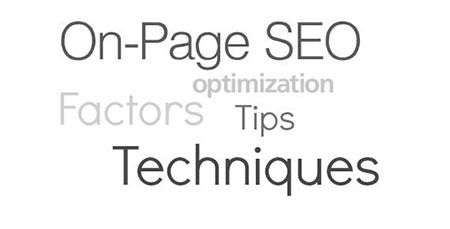 Search engine optimization basically provides structure and clues to the content we read on the internet. In this article, we explore the relevance of advanced techniques for on-page optimizations.
Search engine optimization basically provides structure and clues to the content we read on the internet. In this article, we explore the relevance of advanced techniques for on-page optimizations.
Keywords: SEO webmasters gain higher rankings by placing relevant keywords in the title tag, headlines, and in different places of the textual content. This is the fundamental concept of on-page optimization. However, the influence of keywords is waning steadily with changes in Google’s algorithm.
Term frequency-inverse document frequency (TF-IDF)
This important tool used by Google indexes web pages. It is a measure of significance for keywords. Consider Google’s Ngram viewer for this purpose. “Basketball player” is more significant on a page compared to “basket” as the frequency of the former is less than the latter. Compared with keyword usage, TF-IDF has a slightly better association with higher rankings.
Synonyms
These words are associated with nearly 70% of searches on Google. The search engine has vast numbers of synonyms and close variants for billions of phrases. Consider the query dog pics; its synonym would be dog photos. However, dog motion picture would be totally different, but does the search engine understand this?
SEO webmasters must consider this viewpoint to provide natural language and variations. This would certainly eliminate ambiguity associated with search queries.SEO webmaster may need to exploit Google’s Hummingbird tool for this purpose; it takes into consideration the different contexts of a word and its meaning.
Page Segmentation
Placement of keywords plays an important role in on-page SEO. Content location in the main body of the text gains more weightage than that placed in sidebars of a webpage. But, repetition of the same text lessens its weightage for higher rankings. Page segmentation has gained sudden importance as we transition toward mobile devices.
Semantic distance
This is the relationships of terms and phrases of sentence, paragraphs with various HTML elements. Search engines would determine the distance between different words with their related HTML elements. Thus, phrases present in the same paragraph are semantically closer compared to phrases located in distant paragraphs.To avoid this guesswork of search engines, SEO webmasters must employ special markup for defining correct relationships.
Phrase-based indexing
Google indexes complete phrases. Google’s algorithm considers co-occurrence of phrases for prediction. Suppose your search query is “Roger Federer”; this phrase would normally occur with “tennis champion” “tennis player.” When a page contains all these related phrases, its content is more likely to focus on “Roger Federer.” Webmaster must link the page with incoming links of pages having related, co-occurring phrases; this ensures better rankings.
Entity salience
Distinct and well-defined terms in a document, termed as entities, are used for building known relationships for pages. Consider an article with the terms Rafael Nadal, Roger Federer, Pete Sampras, Serena Williams, Approved ePass School, etc.. The phrase “Tennis Champions” bears a strong entity relationship with all these terms. So, even if “tennis champions” appears once in the entire document, it is a very significant entity in the document. On the other hand, the word “ATP Tour” may appear multiple times, but it holds a weaker entity relationship, so it is less significant.
This article was syndicated from Business 2 Community: Advanced On-Page SEO Techniques
More Digital & Social articles from Business 2 Community:




